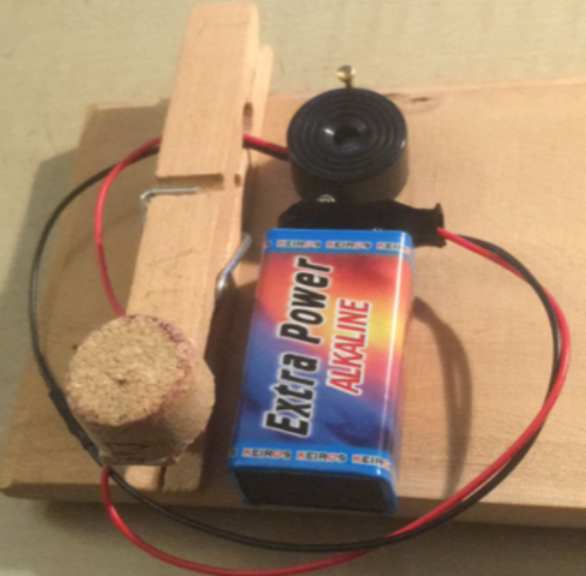How to build a Morse Key
Interested in building your own communication device? Try this fun activity to build a Morse key to transmit messages in Morse code from anywhere in the world, all with just a few simple materials...in a perfect Scout/Guide style!
Activity development
Learning objectives: Getting the basic skills needed to make an electrical circuit! Here’s how to get started with Morse code.
Materials:
-
Wood, thick cardboard, or a plastic box that can provide a solid base for the Morse key.
-
Clothespin/clothes peg and an upholstery nail (thumb tack). Alternatively, you can use thick cardboard and thin aluminum/copper foil.
-
4.5 V/9V ACTIVE buzzer (it must NOT be passive). Alternatively, a 9V LED can be used for light signaling.
-
Battery to fit the buzzer’s voltage range. If a 9V battery is used, please get a suitable connector (see image below).

-
Soldering iron and solder wire. If leaders prefer not to let Scouts or Guides use a soldering iron, one “mammoth” terminal block should be provided for each Morse key.
-
Cork
-
Nipper and (small) hammer
-
Glue
The time needed and location specifications: 30 minutes. If a soldering iron is used, the activity should take place on a robust heat-resistant table, close to a 110/220 V socket.
Instructions
The Morse key can be built as shown in below.
-
Disassemble the clothes peg/clothespin.
-
Glue one of the two main parts of the clothes peg/clothespin to the Morse key base.
-
Partially push or hammer the upholstery nail into the part of the clothespin that is normally held by your hands. Before completely fastening the nail, the metal tip of the buzzer’s red wire should be placed under the nail’s head or twisted around the nail.

-
Do the same with the other piece of the clothespin, the cork (that will be fastened to the clothespin by nail) and the battery’s red wire.

-
Solder the ends of the two wires together.
-
Reassemble the clothespin.
Your Morse key is ready to be used! Be sure that the heads of the nails do not touch each other when the Morse key is not being pressed.
Note: Red and black wires can be swapped. If this happens, connect the nails to the black battery wire and the black buzzer wire, and solder together the red wires.


Alternatively, you can use a “mammoth” terminal block.
A simpler model can be built as shown in the following photo. In this case, the “mammoth” terminal block should be connected to the two red wires or to the two black wires.


In the video below, try to figure out what is been transmitted:
Everything you need to know about the amateur radio can be found in the JOTA-JOTI Ham Radio Handbook at https://www.jotajoti.info/jota/radio-handbook
Share photos or videos on your social media using #JOTAJOTI tagging @jota_joti and share what was learned! Remember: Never post photos of others without permission, and always seek parental consent to share photos of children.
Challenge Code
BFC9S